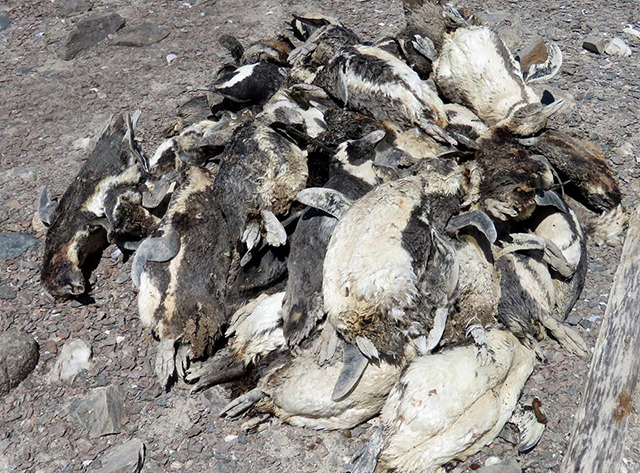THE Halifax Island beach close to Lüderitz has been strewn with hundreds of dead penguins.
Fisheries and marine resources spokesperson De Wet Siluka yesterday confirmed the deaths of the seabirds. He, however, could not give more details, saying a team of officials has been dispatched to the area to assess the matter.
The Lüderitz Marine Research group, an awareness group that shares information about marine life, posted photographs of the dead penguins on the internet after discovering a sudden increase in mortalities among the birds at the Halifax Island beach.
A team from the marine life awareness group managed to get onto Halifax Island on 17 January, and counted 184 penguins which had died.
It also brought back four sick penguins, as well as samples taken from 12 individual birds.
“The (sick) penguins brought into our rehabilitation facility died within a few days, despite intensive care,” a Facebook posting by the group reads.
Group member Jean-Paul Roux yesterday told that dead penguins have been washing up on the shore since mid-December last year.
“Between what we found washed out on the shore, we estimate about 200 birds have died so far,” he said.
He added that by mid-January, all signs were pointing to an unprecedented mortality unfolding.
Roux speculated that it is likely a virus had killed the birds, saying “with central veterinary laboratory results still pending, we still have no idea what is causing the disaster […] and therefore what measures can be taken to minimise the impact”.
According to him, this is the second-biggest catastrophe that has hit the penguin species in Namibia in more than 50 years.
“Fifty years ago, the seabird species was affected by the collapse of sardine fish on which they feed,” he explained.
The African penguin, also known as the jackass penguin, is an endangered species in Namibia and South Africa, marine bird expert Jessica Kemper said in the 2015 book ‘Birds to Watch in Namibia’, which focuses on endangered, threatened and endemic bird species. She recorded that Halifax Island had, after Mercury Island north of Lüderitz, the second-biggest number of African penguin breeding pairs in 2011, when the number was estimated at 852 pairs. The number of pairs at Mercury Island was estimated at 3 171 at the time.
Kemper also recorded that the estimated African penguin population in Namibia was 29 000 adult birds, including 5 500 breeding pairs.
Namibia’s penguin population has been in long-term decline, with the number of breeding birds estimated to have fallen by 55% in the last three generations, with the number of breeding pairs declining by 4% per year between 1956 and 2010, she stated.
“The Namibian population remains particularly at risk from catastrophic events such as oil spills,” Kemper noted. She also pointed out that African penguins “appear to be susceptible to incidents of paralytic shellfish poisoning following toxic plankton blooms, through the ingestion of contaminated prey”.
*Additional reporting from Werner Menges
Stay informed with The Namibian – your source for credible journalism. Get in-depth reporting and opinions for
only N$85 a month. Invest in journalism, invest in democracy –
Subscribe Now!






